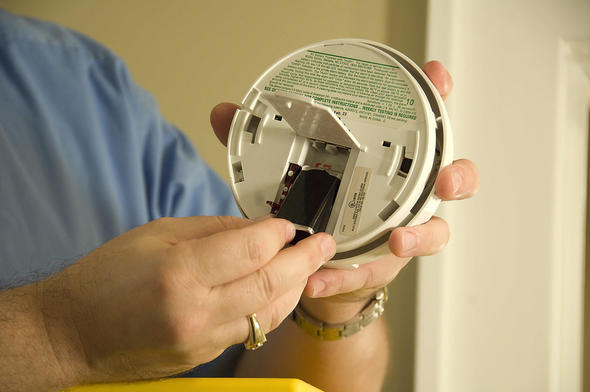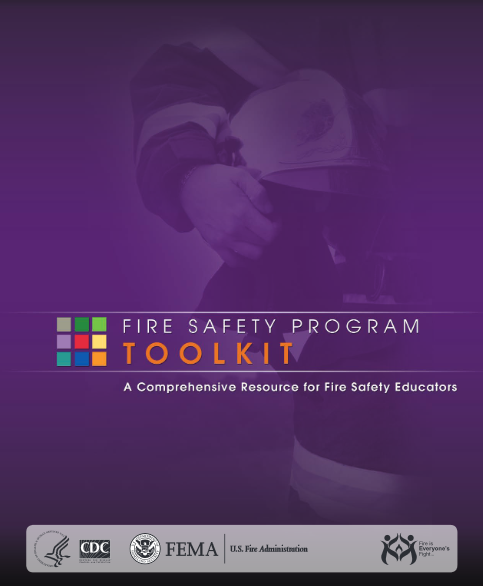|
Last week, Congress passed an agreement to fund the Department of Homeland Security (DHS) for one week under the current Continuing Resolution. If funding is not appropriated after 11:59 p.m. on March 6, FEMA will have to furlough the majority of its permanent employees due to the lapse in appropriations.
Without
an annual appropriation, the small number of impacted FEMA staff who are exempt
from furlough may only provide services that directly apply to the protection of
human life, safety or the protection of property. For more information on these impacts, please see last week's EA Bulletin.
FEMA will be holding the next National Advisory Council (NAC) public
meeting in Jackson Barracks at 6400 St. Claude Avenue, New Orleans, Louisiana 70117, from March 4-5, 2015. During the meeting, the NAC will
meet with the FEMA Administrator and Deputy Administrator, receive program
briefings from agency leadership, and review the progress and potential
recommendations of its three subcommittees: Preparedness and Protection,
Response and Recovery, and Federal Insurance and Mitigation.
Members of the public are invited to provide public comments after each subcommittee report-out and between 4:00 p.m. to 4:30 p.m. CST on Wednesday, March 4, 2015. Directions on how to submit public comments can be found on the NAC webpage.
For those planning to attend in person and for additional information on facilities or services for individuals with disabilities or to request special assistance at the meeting, please contact the Office of the NAC by email at FEMA-NAC@fema.dhs.gov.
More information on the NAC is
available at www.fema.gov/national-advisory-council.
Significant
changes have been made to the Hazard Mitigation Assistance (HMA) Guidance, a
comprehensive document that details the specific criteria of the three HMA
programs: the Hazard Mitigation Grant Program (HMGP), Pre-Disaster Mitigation
(PDM) and Flood Mitigation Assistance (FMA) programs. The Fiscal Year 2015 (FY15) HMA Guidance
provides stakeholders with updates and refinements of program policies and
practice. These enhancements will promote
resilience, and streamline application review, eligibility requirements,
project cost estimates, and implementation.
The
changes apply to the HMGP for disasters declared on or after the date of
publication, as well as the upcoming PDM and FMA application cycles. Since the last update to the HMA
Guidance in 2013, the Office of Management and Budget (OMB) developed
regulations that streamline language from eight existing OMB Circulars. DHS
adopted the Super Circular on December 26, 2014, and FEMA has implemented these
changes in the updated guidance.
FEMA will be hosting three webinars to discuss the new guidance on March 12, 1:30-2:45 p.m. ET, March 18, 10:30-11:45 a.m. ET and March 19. 1:30-2:45 p.m. ET. Participants can dial-in using conference number 1 (800) 320-4330 and 031-155 for the conference PIN and join the webinar via Adobe Connect.
Changes
to the HMA Program Guidance include:
- Climate
Change/Resilience:
Recognizes challenges posed by climate
change that may have impacts on mitigation. Applicants and sub-applicants can
use the additional HMGP 5 percent initiative toward adopting and/or incorporating disaster resistant
building codes.
- 2 Code of Federal Regulations Part 200: The OMB Super Circular:
Adopts the regulations in the OMB Super Circular that outlines the federal
government’s framework for grants management, and are applicable to FEMA awards issued on or after December 26, 2014.
- Mitigation
Planning Changes:
Requires states to update mitigation plans every five years, which provides the applicant with greater flexibility to shift their resources to other important
or pending mitigation activities listed
in the plan.
- New Benefit-Cost Analysis Methodologies:
Incorporates new methodologies for residential hurricane wind projects and the
acquisition of properties in landslide hazard areas that are at risk of immediate
threat.
- Various Environmental Planning and Historic Preservation (EHP) Clarifications:
Enhances efforts to streamline the EHP review process, including defining the
frontloading process (promoting the fuller consideration of EHP compliance
requirements and impacts to a proposed project during project development).
- Resources and Job Aids:
Includes 23 resources and job aids to assist in HMA program delivery. Examples are:
-- Homeowner’s
Guide to the HMGP answers some common questions that homeowners have about
implementing post-disaster projects.
-- Federally Recognized
Tribes and Hazard Mitigation Grant Program discusses benefits and
responsibilities of federally-recognized tribes if they become an applicant
or sub-applicant.
-- Resilience
and Climate Change Adaptation job aid discusses FEMA programs designed to promote
community resilience.
-- Closeout Toolkit includes frequently asked questions and
a checklist to help recipients prepare for sub-award closeout activities.
-- EHP Section
106 Overview includes process flowchart and information on the National Environmental
Policy Act (NEPA) decision making process.
The
HMA Guidance consolidates each program’s eligibility information, outlines the
common elements, and spells out the unique requirements among the programs so
that federal, state, federally recognized
tribal, territorial, and local officials can easily identify key similarities between
the various programs. For more information, visit www.fema.gov/hazard-mitigation-assistance.
On
February 24, FEMA and YMCA of the USA (Y-USA) announced a new partnership that
will help communities across the nation better prepare for, and respond to
disasters by building on existing relationships and enhancing coordination
across national, regional, state and local levels.
Speaking
to YMCA state
and youth leaders from across the nation, FEMA Administrator Craig
Fugate and YMCA Chief Operating Officer Kent Johnson stressed that while the
organizations have different missions, both support youth engagement programs
and focus on building community resilience. The new Memorandum of Understanding
capitalizes on each organization’s strengths and resources – including the
YMCA’s networks in 10,000 communities nationwide, and FEMA’s relationships with
emergency management authorities and voluntary organizations active in
disasters – to build resiliency and support communities when they are most
vulnerable.
 Kevin Washington, President and Chief Executive Officer, YMCA of the USA with Administrator Craig Fugate. Photo courtesy of YMCA of the USA/Liz Roll.
While
the collaboration might look different in each community, Y-USA and FEMA will
work together to disseminate information to the public (including at-risk
populations, disaster survivors, and volunteers); share best practices and
training resources; and engage in community, state, and regional emergency
management activities such as planning and exercise efforts.
For
more information, please view the full press release
online, visit ymca.net, or contact VAL-Team@fema.dhs.gov.
A smoke alarm with a dead or missing battery is the same as
having no smoke alarm at all. The United States Fire Administration (USFA) recommends
you test your smoke alarms each month, replace the batteries at least once
every year, and replace the entire smoke alarm every 10 years. For more
information, visit USFA’s
website.

The U.S. Fire Administration and
Centers for Disease Control and Prevention’s Fire
Safety Program Toolkit is a comprehensive resource for fire safety educators of all levels. This toolkit covers the five basic steps to create or enhance a fire safety education program for the community, including how to develop tools that will help assess program effectiveness.
 |
FEMA Region 3 serves Delaware,
Maryland, Pennsylvania, Washington, D.C., Virginia, and West Virginia. Located
in Philadelphia, Pennsylvania, Region III is close to historically rich symbols
of early America, such as Independence
Hall and the Liberty
Bell. Led by Regional
Administrator MaryAnn Tierney, Region III’s 185 employees provide critical
preparedness, mitigation, response and recovery support to the region every
day. Region III is in the unique position of working with two of the four
Commonwealth states (PA and VA) in the U.S., as well as with the National Capital
Region and Washington, D.C. Serving close to 31 million people, Region III is
made up of multiple major metropolitan areas as well as thousands of smaller
communities. Region III borders the Atlantic Ocean through DE, MD, and VA, and
Lake Erie in PA.
FEMA Region III most commonly
experiences severe storms, but disasters such as flooding, hurricanes,
tornadoes, and winter storms have also resulted in declarations. FEMA Region
III employees have taken their expertise to other regions and disasters, including
Hurricane Sandy, to assist in relief efforts.
One of the many unique elements of
Region III is its role in the Presidential Inauguration and State of the Union
Address. As National Special Security Events (NSSEs) taking place in
Washington, D.C., the Regional Office works with other members of the federal
family to ensure these events run smoothly. Region III will also perform a
pivotal role in the upcoming World Meeting of Families and the first official
visit to the U.S. by Pope Francis.
FEMA announced the
opening of the Fiscal Year 2014 (FY14) Staffing for Adequate Fire and Emergency
Response (SAFER) application, which will close on March 6, 2015 at 5 p.m. ET.
The SAFER grant program comprises of two categories: hiring of firefighters;
and the recruitment and retention of volunteer firefighters.
To receive a SAFER grant
award, applicants must be registered and have up-to-date information in the
online System for Award Management. Registration is
required of all Assistance to Firefighters Grant Program applicants and
awardees.
FEMA is currently
recruiting for eight SES Deputy
Regional Administrators. This announcement closes March 6, 2015.
For information on these and other careers opportunities within FEMA, visit www.fema.gov/careers.
FEMA and federal
partners are providing a series of listening sessions on the implementation guidelines of the Federal Flood Risk Management Standard (FFRMS).
These sessions provide the opportunity to learn more about the Standard, ask
questions, and provide feedback on how federal agencies implement the Standard.
Sessions will be held in Ames, Iowa; Biloxi, Mississippi; Mather, California;
and Norfolk, Virginia; with additional sessions to be announced soon. Listening
session dates and locations are available online.
Due to
space constraints of the facilities, seating may be limited. To reserve a
seat in advance, please provide a request via email at least three days in
advance with the contact information of the participant (including name,
mailing address, and e-mail address), and the meeting to be attended to FEMA-FFRMS@fema.dhs.gov and include the
subject/attention line: Reservation Request for FFRMS. For
anyone attending the meetings who is hearing or visually impaired, or who
requires special assistance or accommodations, please also contact FEMA-FFRMS@fema.dhs.gov.
A draft version
of Implementing Guidelines is open for comment until April 6,
2015. Questions and comments may be submitted to FEMA-FFRMS@fema.dhs.gov.
|